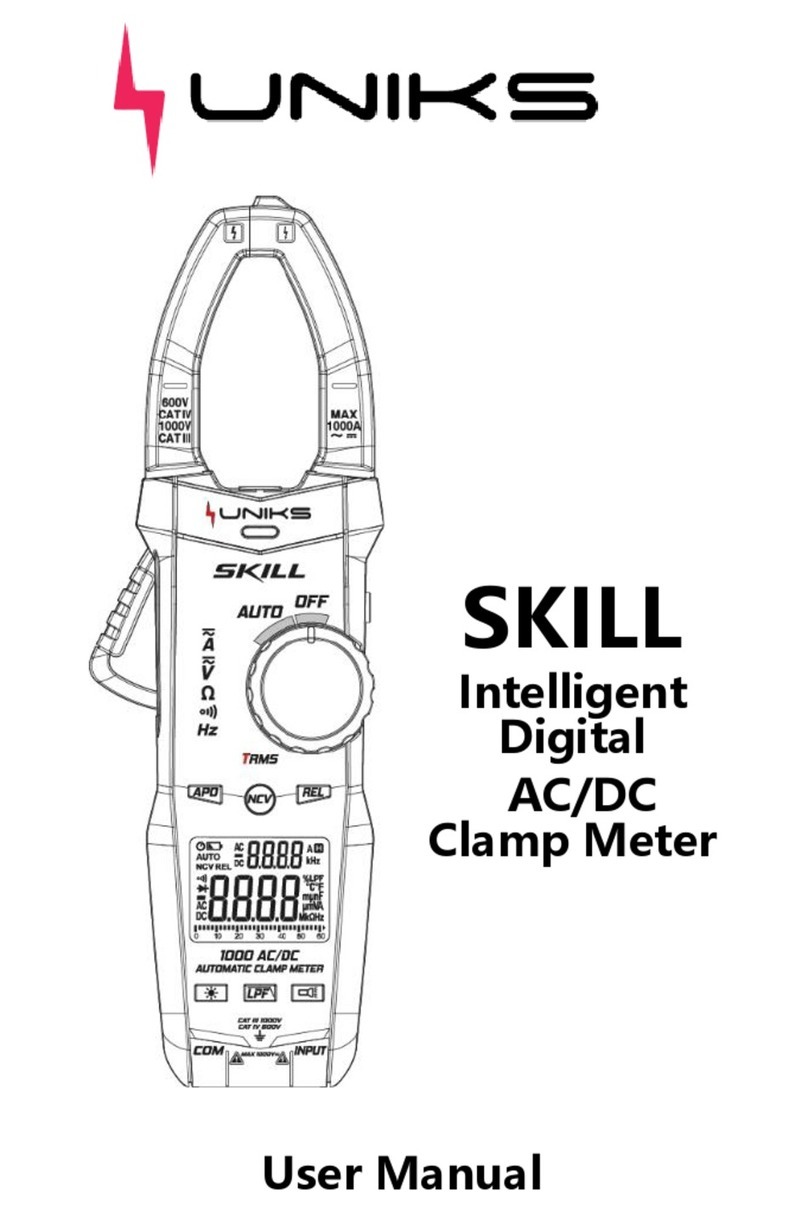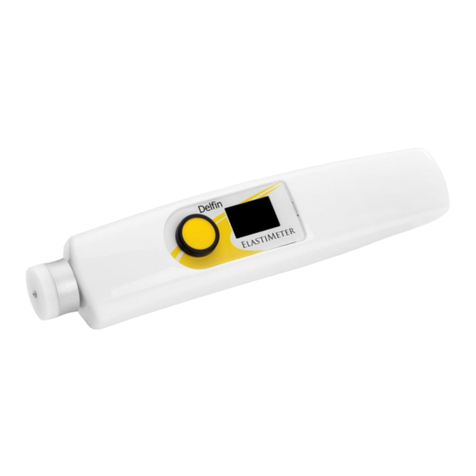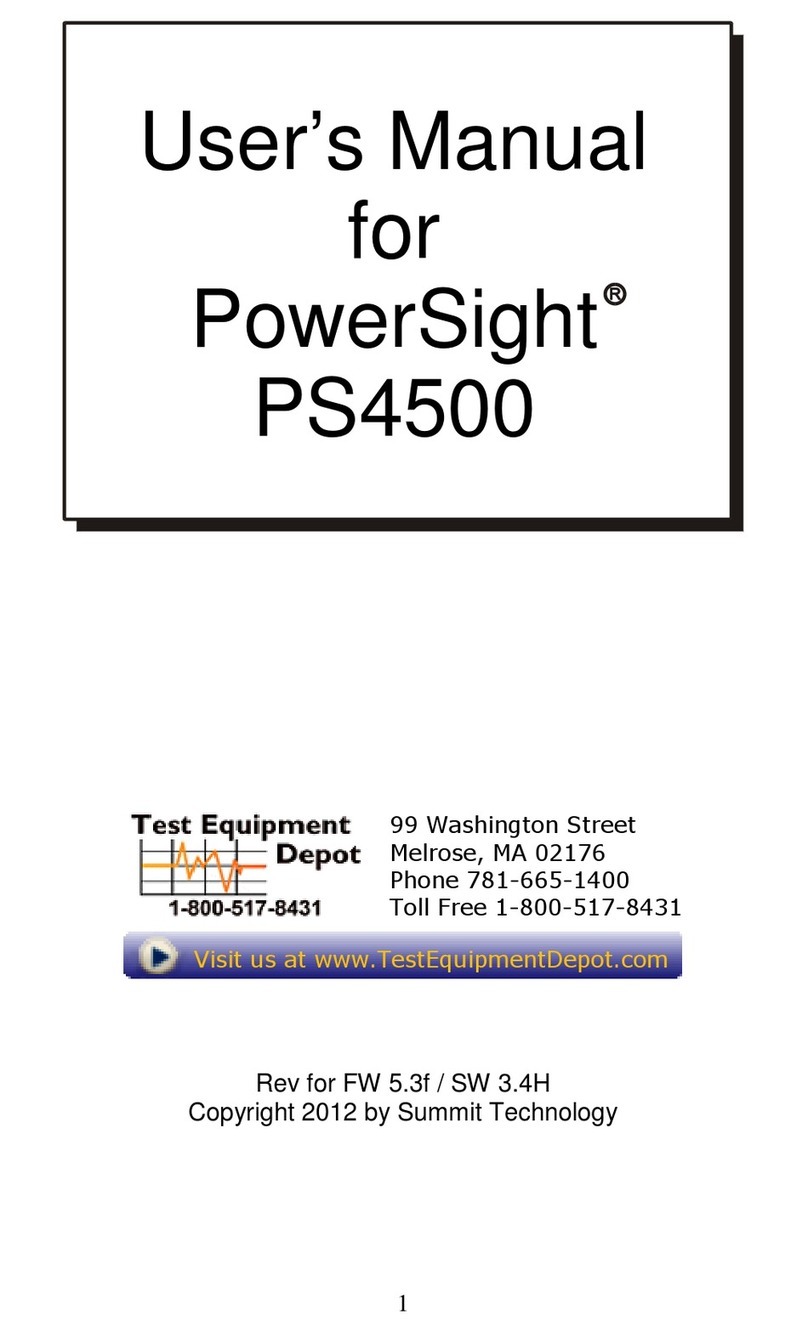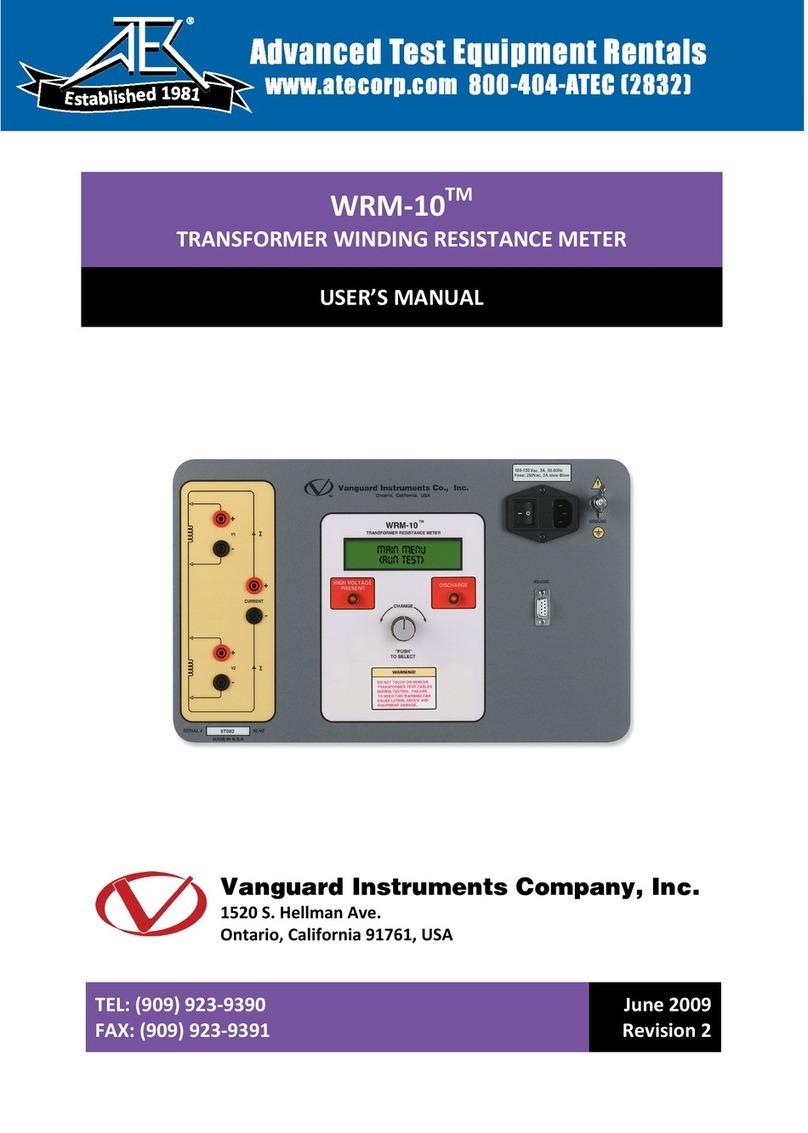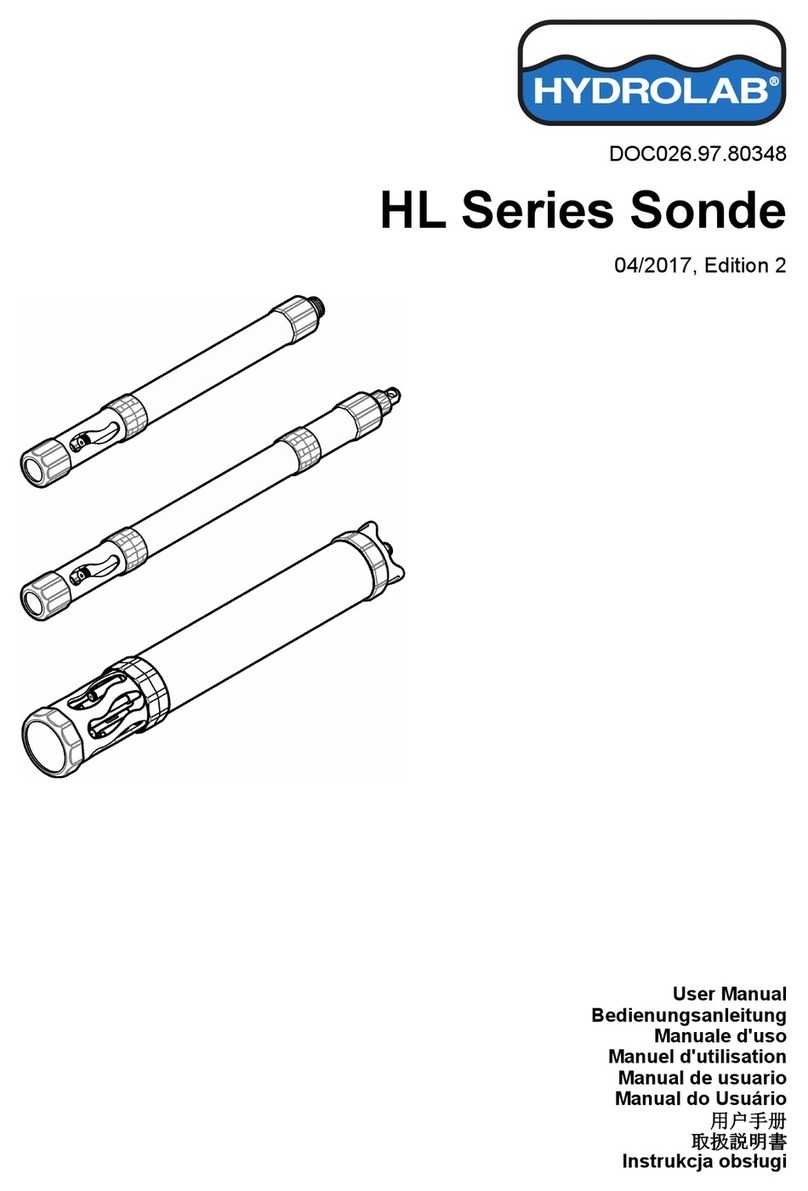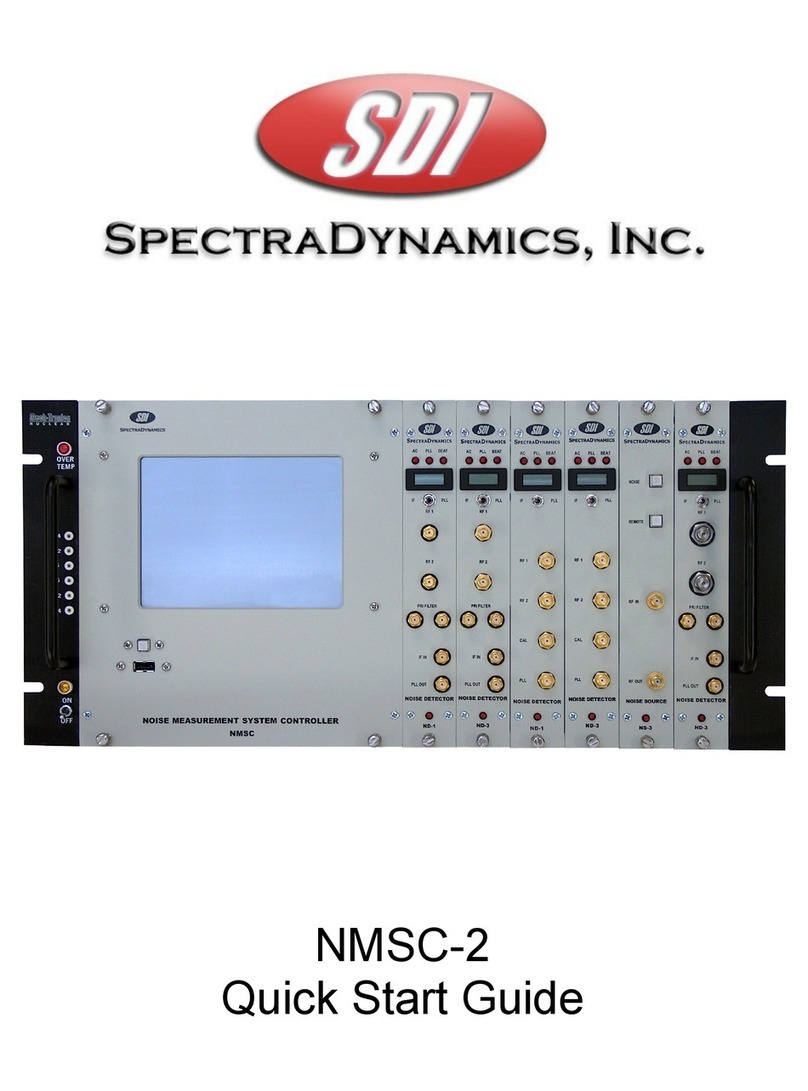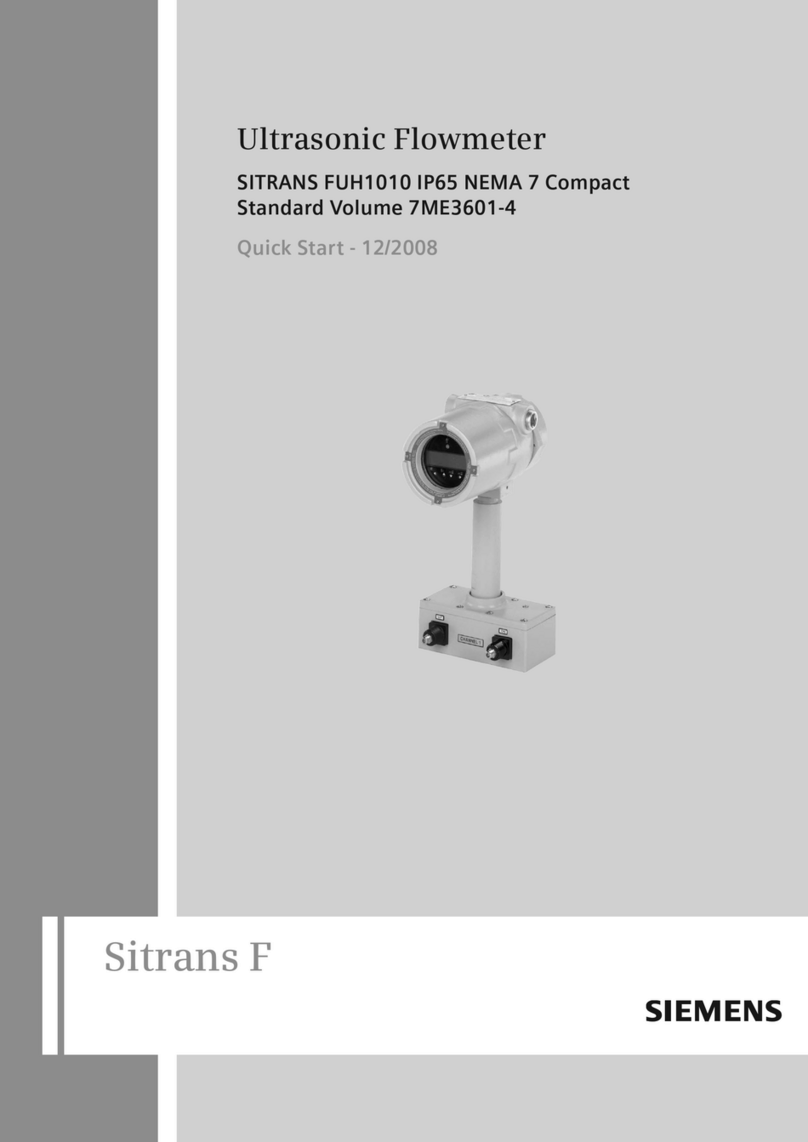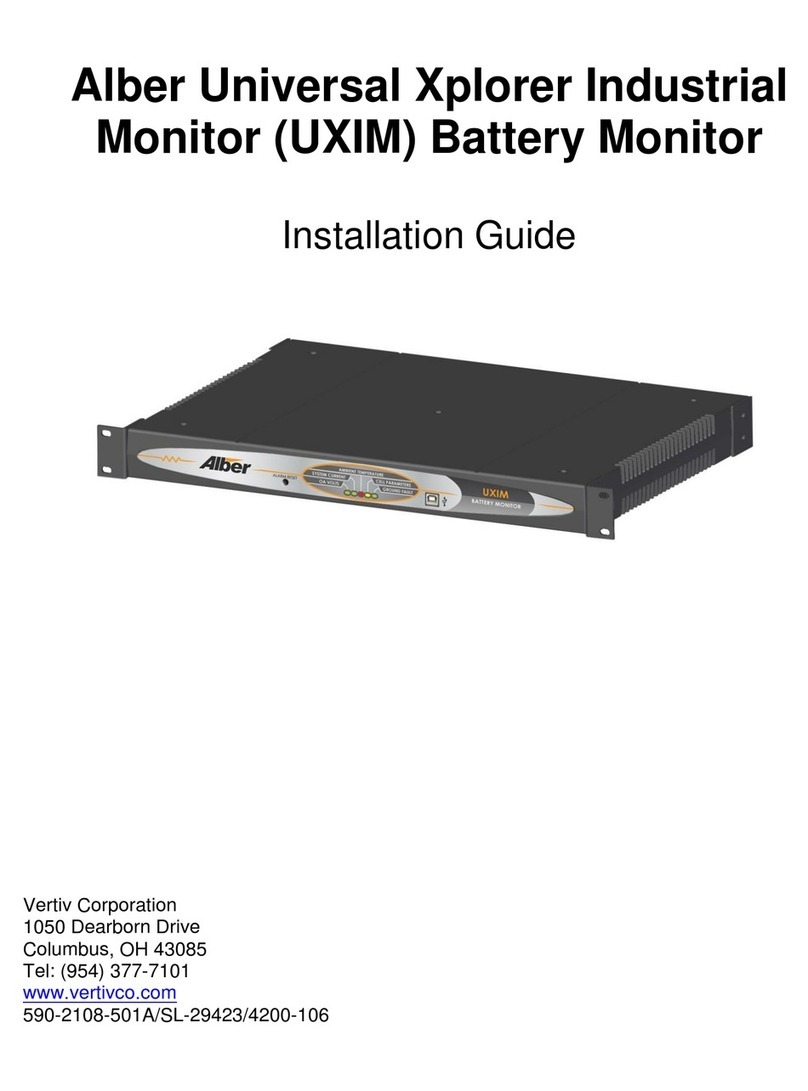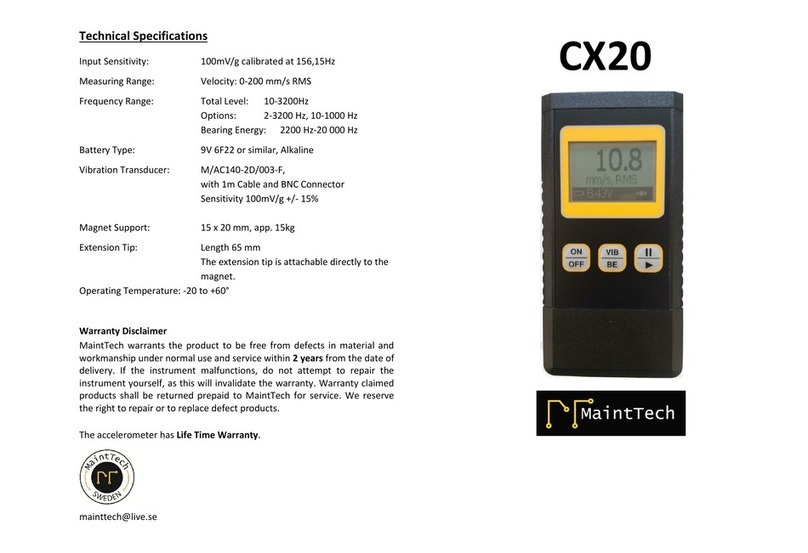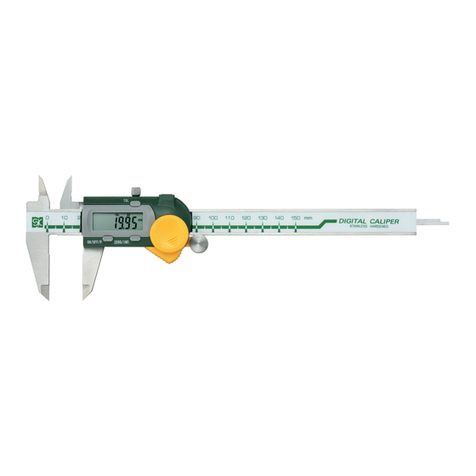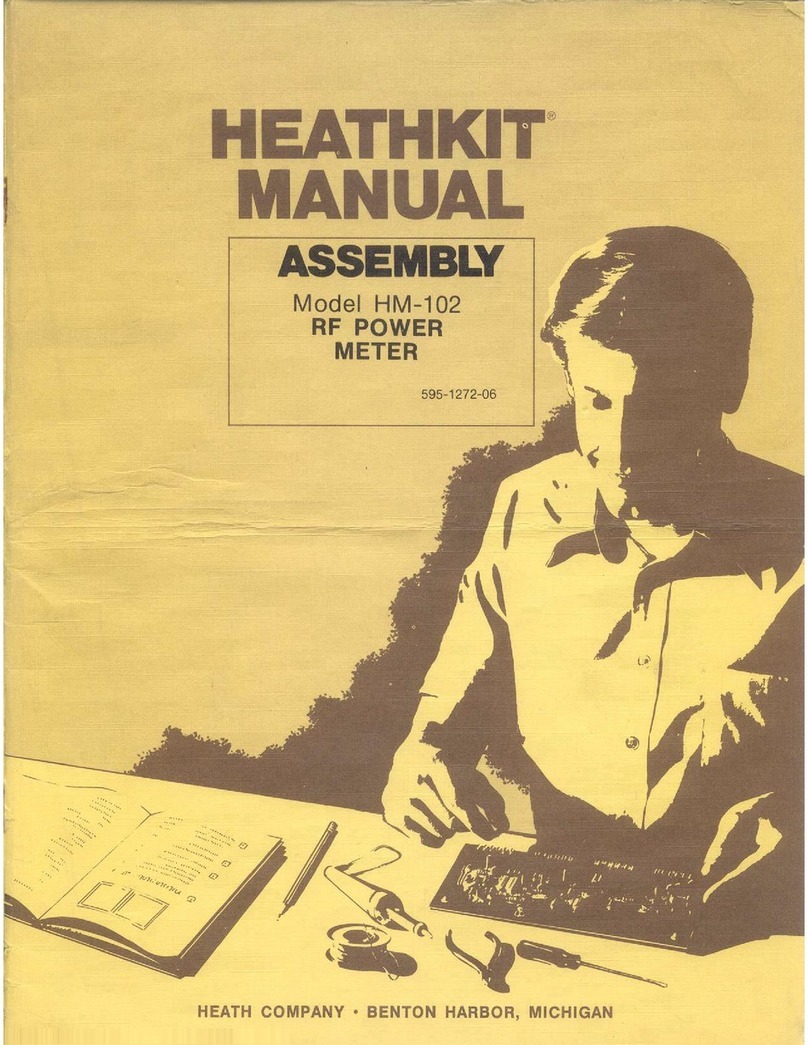Harrison 42000005 User manual

User Guide.
ELECTROSURGERY ANALIZER

2

3
Table of Contents
INTRODUCTION ---------------------------------------------------- 4
SAFETY INFORMATION ------------------------------------------ 4
ACRONYMS AND DEFINITIONS -------------------------------- 5
PACKAGING --------------------------------------------------------- 6
UNDERSTANDING THE DEVICE ------------------------------- 7
TURNING ON THE DEVICE ------------------------------------- 10
TEST MODULES ---------------------------------------------------13
GENERATOR OUTPUT TEST ----------------- 13
EXTERNAL RESISTANCE MODULE --------- 14
CQM ------------------------------------------------- 20
HF LEAKAGE CURRENT ----------------------- 21
SOFTWARE AND APPLICATION ------------------------------- 29
PROBLEMS AND SOLUTIONS --------------------------------- 30
MAINTENANCE -------------------------------------------------- 30
BATTERY INDICATOR ----------------------------------------- 31
TECHNICAL SPECIFICATIONS ----------------------------- 31
FAQ ----------------------------------------------------------------- 33

4
INTRODUCTION
SAFETY INFORMATION
HARRISON Electrosurgery Analyzer is practical, compact, portable,
and easy to handle. It is used in electronic scalpel performance tests.
For better conservation of your device and to prolong its useful life,
please consider the following:
The data HARRISON collects provides a better analysis of
different electrosurgical units in different test modalities.
Harrison allows the simulation of:
Power
Crest
Factor
RMS
Current
Main
Frequency
https://www.arkmeds.us/support

5
If you notice any irregularity with the device, do not put
it into operation. Depending on the problem, the device
may suer irreversible damage, which will lead to costly
maintenance or discontinuity. Whenever the device
fails, set it aside and contact the Arkmeds Support
Team through the channel:
https://www.arkmeds.us/support
1. Do not expose the device to high humidity.
2. Do not expose the device to temperatures above 50 °C.
3. Respect the device’s battery life.
4. Insert the connectors only into the spots intended for operation.
5. Do not connect this device to the patient.
6. Replace the power cord if any damage is identified
7. Replace accessories if any damage is identified.
8. Do not open the device without the expertise and the manufacturer’s
authorization.
9. Always examine the device before and after each use.
ACRONYMS AND DEFINITIONS
- RMS - Effective value
- Crest Factor - Dimensionless value equal to the peak output
voltage divided by the RMS voltage
- Main Frequency - Oscillation frequency of the scalpel output signal
- ESU - Electrosurgical Unit
- IEC - International Electrotechnical Commission
- CQM - Contact Quality Monitor

6
PACKAGE CONTENT
Harrison analyzer comes with the following items:
1 x Harrison (PN 42000005)
1 x User Manual (PN 12000034)
1 x Calibration Certificate
Accessories
2 x 30 cm Banana/banana connector (PN 31000001)
4 x 110° banana/banana connector (PN 31000024)
1 x Resistance Module (PN 31000042)
1 x Transport Bag (PN 12000040)
1 x Power Cord*
Brazil (PN 11000015)
USA (PN 11000236)
Europe (PN 11000237)
* The customer chooses the power cord standard.
Notes: After unpacking the device, connect it to the power grid to
charge the internal battery.

7
UNDERSTANDING THE DEVICE
Next, the device will be demonstrated with the description of its
connectors and controls
VISTA FRONTAL:
Touch Screen.
On/Off Button.
1
1
2
2

8
VISTA SUPERIOR:
VISTA LATERAL ESQUERDA
1
1
1
4
External Module Connection
2 5
3 6
7
7
VISTA LATERAL ESQUERDA
1
External Module Connection
1
Scalpel Input - Active.
Scalpel Inlet - Passive.
Ground Pin.
Air Circulation.
Cable Connector with Fuse
Holder.
Internal Load Connector
(default 200ohm).
External Load Connector.

9
VISTA LATERAL DIREITA
VISTA TRASEIRA
1
1
1
Air circulation.
Serial number identi cation tag.
1

10
TURNING ON THE DEVICE
Press the “on/off” button to turn on the device.
The device will perform internal communication tests and display the
settings screen of each module to be tested.
Dragging the
screen downwards,
we have access
to the menu with
options:
Bluetooth
Wi
Language
Card 1
Card 2
SCREEN

11
Bluetooth: allows connection to the cell phone and integration with
the Arkmeds Software management system.
Wi: enables the device to be connected to the internet network to aid
in remote access by the factory. By clicking on the icon, a list of available
networks will appear. Just select the one you want and enter the password.
Language: allows you to select your preferred language. By clicking on the
icon, the available languages will be displayed. Just select the language, click
on restart, and the device will return with the information in the chosen language.

12
Card 1: with only this option enabled, it is possible to view the Power
reading module in full screen.
Card 2: with only this option enabled, it is possible to view the
frequency reading module in full screen.
Note: with 2 Cards enabled, both modules will be displayed.

13
In this section are each of the features of HARRISON Electrosurgery
Analyzer.
HARRISON measures the performance of high-frequency electrosurgical
units (ESU). The product makes measurements and tests:
TEST MODULES
ESU TEST
1.1 Power, RMS
1.2 Current, RMS
1.3 Main Frequency
1.4 Crest Factor
1. Generator Output Test
2. Contact Quality Monitor (CQM) Test
3. Leakage Current Test HF CF and BF

14
Carry out the tests safely, to avoid electric shock, skin burns, or other
injuries, respect the following points:
Understanding the Module
The resistor module has:
- 3 resistors of 100R (R1 to R3);
- 2 of 200R (R4 and R5).
Harrison’s External Resistance module allows tests with dierent resistance
values in front of resistor associations. Cables are sent along with the
module to make connections to fulll Monopolar, Bipolar, and CQM tests.
• Do not operate the Scalpel with loose active and dispersive parts.
• Test lead ends are for connection during testing, used between
the analyzer and the scalpel.
• Check the accessories before starting the tests. If they are
damaged, replace them.
• Perform test procedures only if you are sure and understand
how to perform them.
• Make sure there is no contact between the active, dispersive,
and other parts, avoiding a short or accidents.
• The pedal activation time must be a maximum of 3 s and the
interval for the new activation of 15 s.
WARNING!
EXTERNAL RESISTANCE MODULE

15
In addition, it has a heat dissipation system. To activate it, simply
connect the cable to the left side of Harrison and the External
Resistance Module panel.

16
The following gure shows the connection for the test between the ESU
and Harrison. Make the connections to perform the power test as follows:
1. Connect the active pen connector on the ESU to the Active port on
HARRISON.
2. Connect the ESU dispersive board to HARRISON’s Passive port.
3. Connect the two ESU Dispersive board terminals together.
4. Connect the external resistor ports to the resistor module,
associating to the appropriate ESU value in Monopolar mode (refer to
the ESU manufacturer’s manual).
Generator Output Test - Cut and Coagulation
Connections: MONOPOLAR
Note: the ideal resistance value of each test for each mode (Bipolar
and Monopolar) must be checked by the user before performing the
test with the user manual or the manufacturer.

17
In HARRISON, click on the “Resistance” eld and indicate the resistance
value adopted in the test. A bar to adjust the resistance value and an icon to
perform the input by a numeric keypad will be displayed.
Harrison Settings

18
• Power Chart
• Power
• RMS Current
• Crest Factor
• Frequency Chart
• Main Frequency Reading
Reading: with the connections made and with the adjustment of the
resistance value adopted, it will be shown on the screen:
The following figure shows the connection for the test between the
ESU and Harrison. Make the connections to perform the power test,
as follows:
1. Connect the two ESU bipolar connectors to HARRISON’s Active
and Passive port.
2. Connect the two ESU Dispersive board terminals together.
3. Connect the external resistor ports to the resistor module,
associating to the appropriate ESU value in Monopolar mode (refer to
the ESU manufacturer’s manual).
Notes: During the test, keep it on for a maximum of 3 s and off
for 7 to 10 s.
Generator Output Test - Cut and Coagulation
Connections: BIPOLAR

19
In HARRISON, click on the “Resistance” eld and indicate the resistance
value adopted in the test. A bar will be displayed to adjust the resistance value,
and an icon to perform the input by a numeric keypad.
Harrison Settings

20
The following gure shows the connection for the test between the ESU
and Harrison’s resistance module. Make the connections to perform the
contact quality test as follows:
1. Connect the Split board terminals to the target resistance value.
2. Check the contact level on the scalpel screen or the response according
to the value informed by the manufacturer.
Contact Quality Monitor (CQM) Test
Connections
• Power Chart
• Power
• RMS Current
• Crest Factor
• Frequency Chart
• Main Frequency Reading
Reading: with the connections made and with the adjustment of the
resistance value adopted, it will be shown on the screen:
Table of contents
